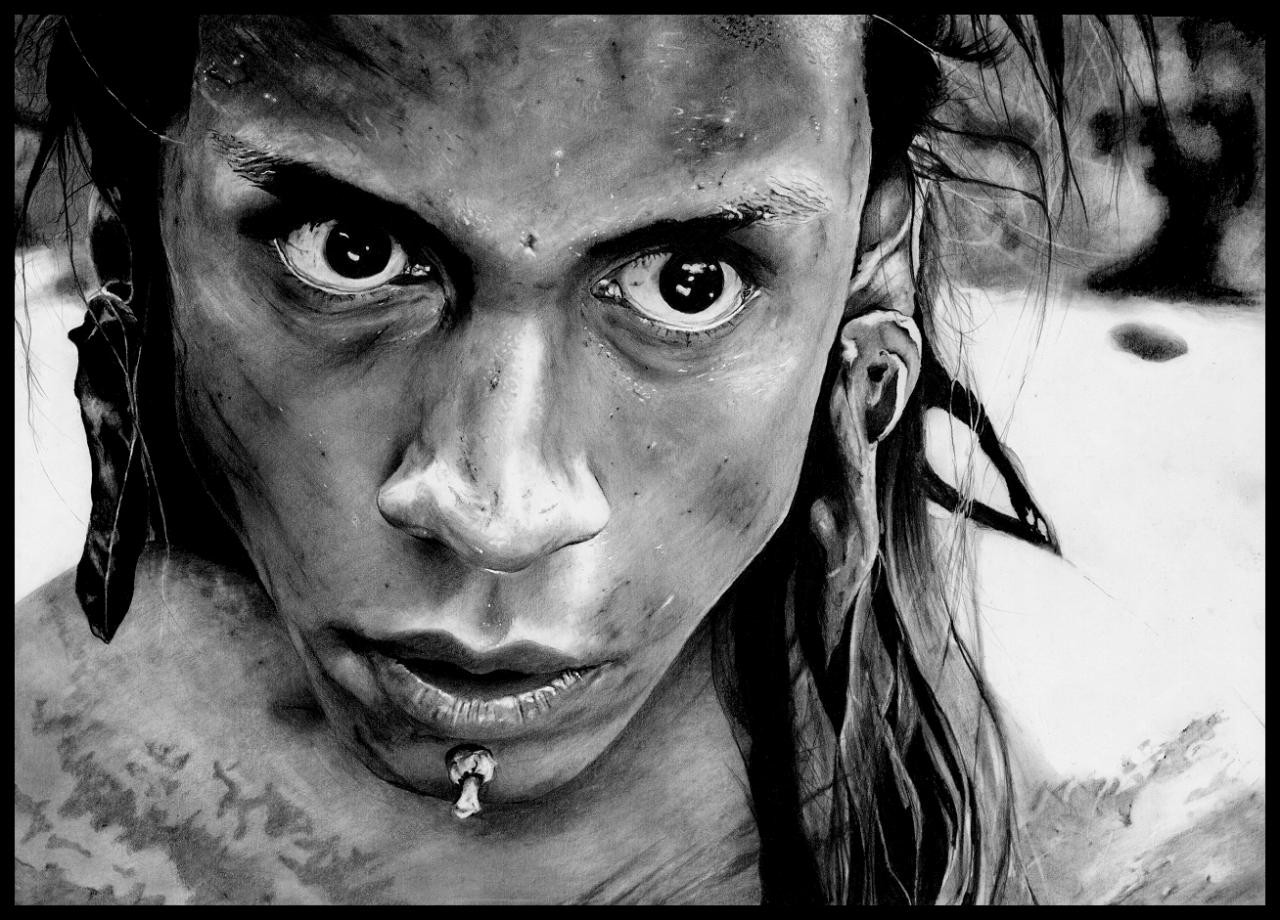“Do you know how the last Tasmanian tiger died?” Telemachus asked me in the car.
He has always taken a keen interest in finding information about animals in books and encyclopedias. Now, at the age of eleven, he seeks out this information on the internet.
“It died in a zoo. It was the last alive and they let it die in there. In 1936. There is a video”.
I can discern genuine grief and puzzlement in his voice.
“I have seen the video”, I tell him while keeping my attention on the road.
He expects from me something more than that. My answer is so worthless.
“Why did they let it die in there?”
“There was no other. What could they have done?”
“Set it free, of course.”
“It would still die.”
“Yes, but it would die free.”
Telemachus sensitive as a child, and as a man too, saw the video and sensed the distress of the last tiger. He didn’t think cynically or scientifically. He merely sensed.
He believed that it would be better to set it free; to let it vanish in the Tasmanian forests and hunt or search on the off-chance for a last female – or at least a male and have a beer together while witnessing extinction inching closer.
“Die free”, that was Telemachus’ exact words.
~~
Several hours later, he brings up the tiger again.
“They had put a bounty on it because it would eat their sheep”.
“At the time of the first European settlement, the heaviest distributions were in the northeast, northwest and north-midland regions of the state. They were rarely sighted during this time but slowly began to be credited with numerous attacks on sheep. This led to the establishment of bounty schemes in an attempt to control their numbers. The Van Diemen’s Land Company introduced bounties on the thylacine from as early as 1830, and between 1888 and 1909 the Tasmanian government paid £1 per head for dead adult thylacines and ten shillings for pups. In all, they paid out 2,184 bounties, but it is thought that many more thylacines were killed than were claimed for. Its extinction is popularly attributed to these relentless efforts by farmers and bounty hunters”
source: Wikipedia
https://en.wikipedia.org/wiki/Thylacine
“How could they do this?”
“Are you asking about the tiger?” I ask him. “The animal? The Europeans who went to Tasmania came across people who were living primitively. They exterminated them all. They put a bounty on them, too, five pounds for every grown man and two pounds for the children. They named the last Tasmanian woman Truganini and she died in 1876, also in captivity, dressed in European clothes in a European house”.
I paused briefly. Cars stuck in traffic. Where do we go? What’s the rush?
“They exterminated, and still do, human beings. Do you think they would feel sorry for the animals?”
“Why the human race is like this?” he asks me and naturally I can’t come up with a decent answer.
Why the human race is like this?
~~
The next day, or maybe the day after the next, for unrelated reasons, I put on Mel Gibson’s movie Apocalypto.
The director makes an effort to convey a picture of the pre-Colombian America, how was the life of the indigenous people prior to the invasion of the Europeans and the beginning of the Great Genocide (see https://sanejoker.info/en/2016/07/genocide-history.html)
For all the historical errors which we should wave aside when it comes to an artistic creation, Gibson portrays the differences between the people of the forest, the small tribes, and the Mayas.
Mayas had developed the “brightest” civilization of the west hemisphere whose accomplishments were on a par with those of Egypt, India and China.
But on what “fuel” did the Maya civilization run? Pretty much like every single empire, be it the Roman or the British one, this fuel is made of flesh, their blood and their sweat.
War and slavery, war and exploitation. The bigger a group of people becomes and gains centralized power, from a tribe to a nation, from a city to a kingdom to an empire, the bigger its needs in fuel, the more violent it turns, the more of blood and sweat it requires.
~~
The Maya Empire decayed before the European invasion. It’s par for the course in all empires. They reach their peak and then the resources run out. Then somebody else displaces them.
The Byzantine Empire had declined long before the Turks appeared. Genghis Khan led Mongols from the Pacific Ocean to Caspian Sea when the Chinese were incapable of putting up any resistance whatsoever.
The only thing all these empires that rose and fell on our planet have in common is violence, war and blood.
No empire, ever, prevailed in a peaceful/philosophical way.
~~
The Indians of the forest were living and surviving as part of the forest. They would rarely eat meat and large prey was a cause for celebration for the group. Usually they would contend themselves with smaller animals/serpents/rodents. They feared jaguars and they would kill them in case they crossed their path in order to survive. But at the same time they were totally aware that the animal was just as important as them, nay superior.
The Indians of the Maya Empire had to feed/clothe/deck out the kings, the aristocracy, the priests, the soldiers, the craftsmen, the servants, the prostitutes, the slaves. Since corn doesn’t thrive in the jungle and feeding large herds was impossible (ecology precedes sociology) they had no other choice but seek out the necessary proteins in human flesh.
Anthropophagy was a necessity for the Mayas – and religion sanctioned this very necessity.
The Christian religion on its turn sanctified the invasion and slaughter of the Indians. Not for food, but for riches, dominion, expansion.
Because the human race is like this. Why is the human race like this?
~~
Shortly after midnight, somewhere in Europe:
Cars parked all over the place. No voice from a scops owl tonight, just cars and bikes.
Across the street, six-storey apartment blocks with the alarm declaring the presence of burglars.
The only living creatures are the barking dogs and the withering flowers; and the uncomplaining trees at the pavement.
From the balcony I sit, it is hard to see the sky. I have to bend forward and even then I can barely discern three of them.
Our connection with nature is broken down, there is only cement and led lights. But we got used to it – and we have Wi-Fi.
We must wake up early for school and later for work and later more obligations follow and later…
In the global empire, the fuel is us.
We are dying imprisoned like the last Tasmanian tiger while –and that’s the funniest part- thinking we are free people.
This is the tragedy: we think we are free.
But we have free Wi-Fi.
~~~~~~~~~~~~~
Sanejoker’s Facebook Page:
https://www.facebook.com/sanejoker
Translated by Alexandros Mantas:
https://residuosmentales.bandcamp.com/releases









